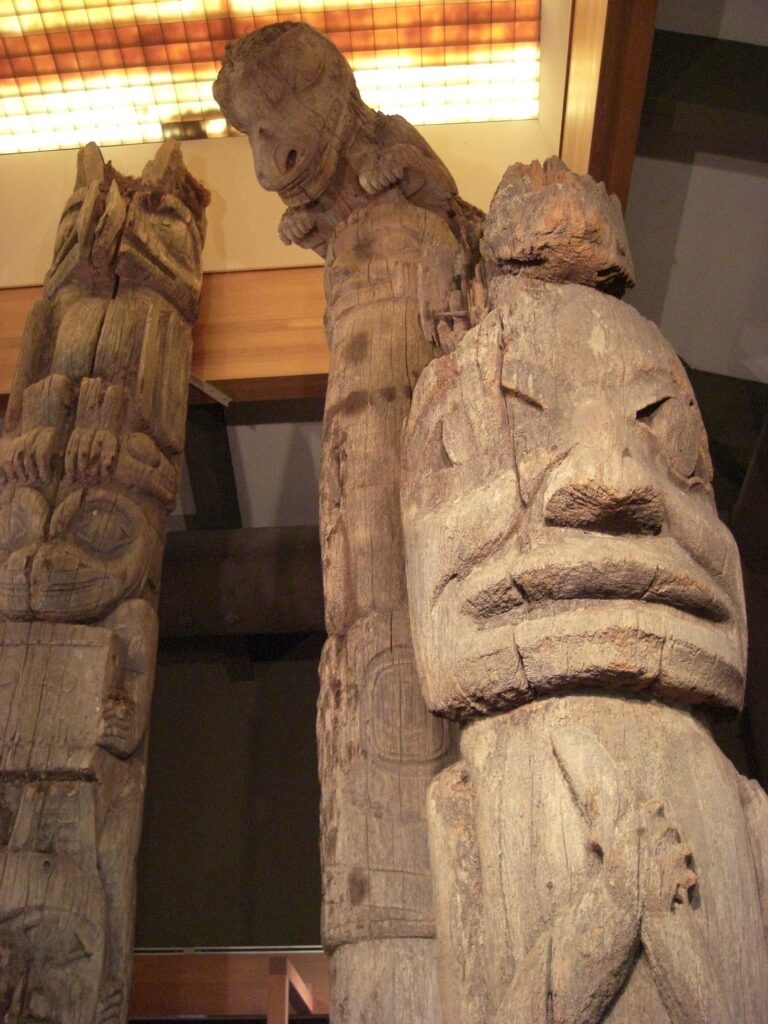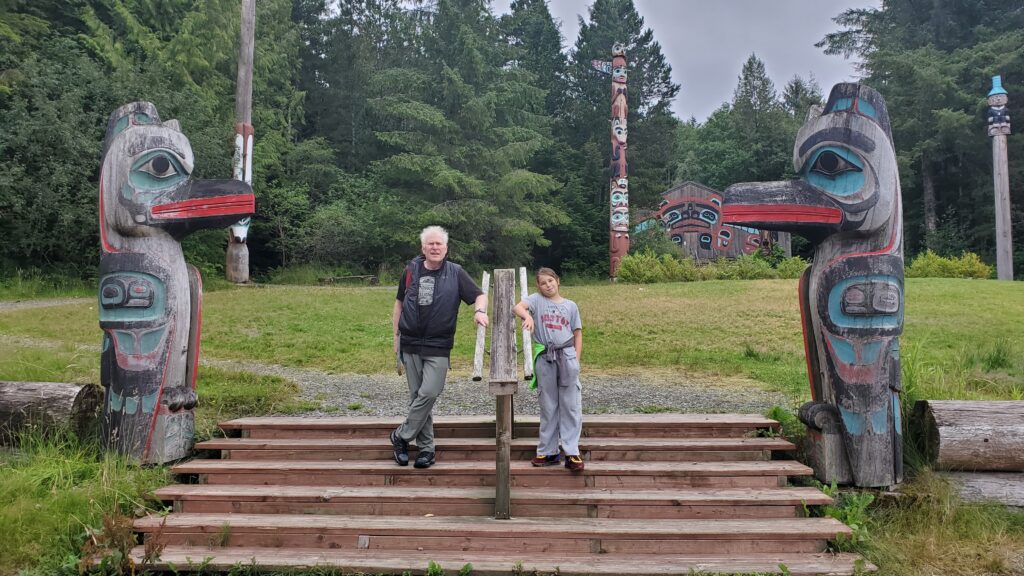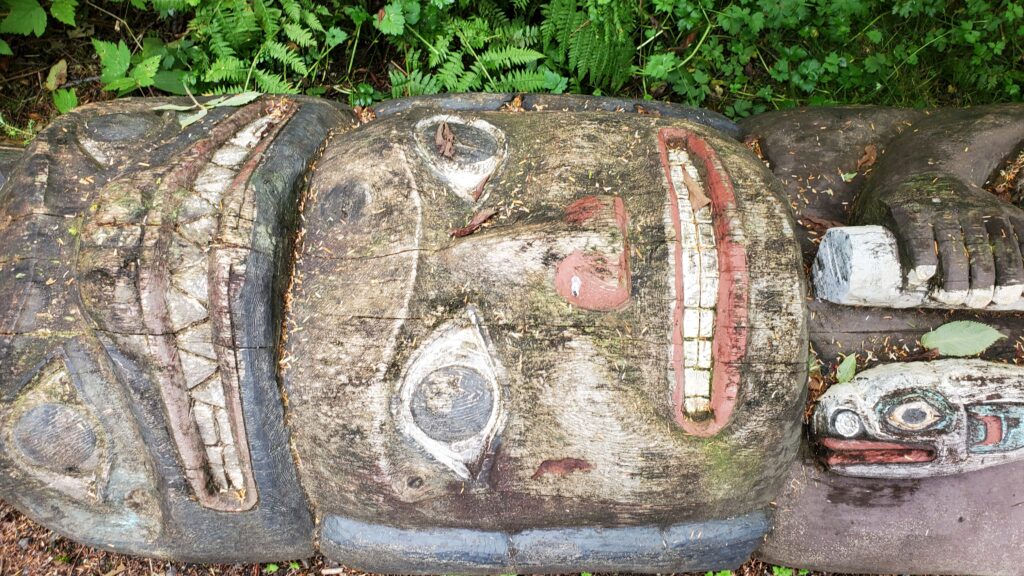Ketchikan, Alaska – Apparently, Ketchikan contains the largest collection of Native American totem poles in the world (more than 80, if anyone is counting). I was not counting, but we have seen totems and more totems. I suspect the twins had their fill after the first day, when we went to Potlatch Park. But that was just the beginning.
We have learned a lot in our first few days, especially about the value of totem poles, not only as artistic expression but also as a historical record. Totems might serve to commemorate a significant event, to honor a notable person, or to tell a story from Tlingit or Haida lore. They are an art form and a history lesson, a testament to the rich cultures that inhabit this region.
In addition to Potlatch Park, there are three main places to see Native American totems in Ketchikan:
Saxman Village
Two miles south of Ketchikan, Saxman is unique because it is an actual native village, where Tlingit, Haida and Tsimshian peoples relocated from more remote villages in the late 19th century (and is still home to about 400 residents today). The 29 totem poles on site are mostly replicas of totems that were left in the abandoned villages. Indeed, the tradition is to allow totems to complete their life cycle, eroding and returning to the earth. The carving of replica totems is an important part of remembering the stories and preserving the history.
Here, Moon Raven and Sun Raven represent the foundational Tlingit story of how the trickster Raven released the sun and moon and stars and brought light to the world.

Totem Heritage Center
Totem Heritage Center is the only indoor facility, housing a collection of 19th century totem poles. These are among the oldest surviving examples in the region. In the 1970s, Native elders made the decision to retrieve the historic poles from abandoned Tlingit and Haida villages around the region. My understanding is that the practice of carving totems was fading from the culture, and the elders feared it would be lost. So they made the decision to preserve these historic examples. (Image: By Ketchikanadian – Own work, CC BY-SA 3.0, https://commons.wikimedia.org/w/index.php?curid=23133208)
Totem Bight State Park
By the time we got to Totem Bight, the twins had seen enough totem poles for one vacation, but this was my favorite of the four spots, due in part to its location. This national historic park is about five miles north of town, in a spectacular setting overlooking the Tongass Narrows. (Vocabulary tip: A “bight” is a bend or curve in the coastline, forming a cove.)
Here, we could see totems and more totems, some in various states of erosion, as they returned to the earth, even as their history lives on in a new creation.



